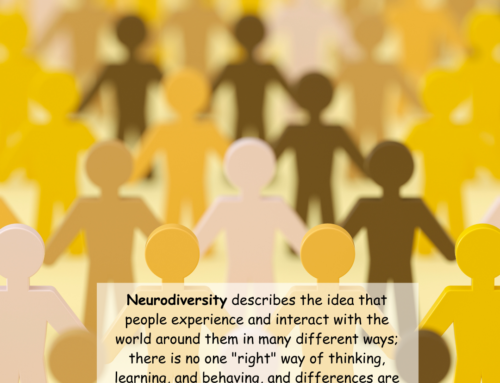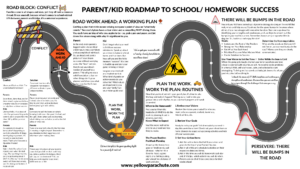Ok, so when it comes to getting to the gym, I’m pretty disciplined. But I’m disciplined because I enjoy it—the adrenaline, the focus, the sense of accomplishment. I’ve just always been that way. And because I love working-out-hard, I have to fuel my body to take the pounding, so I eat healthy-ish. The result? I tend to be fit-ish. [ I know, I know, la de da, good for you, Cara].
But again, my fitness is a byproduct of doing something I enjoy—it’s no indicator of what the rest of my life looks like. If someone looked at me across the Target parking lot and thought, “Wow, look at that superwoman carrying all her groceries in one trip. I bet she has her meals planned for the week and when she gets home to her clean house, her children will have already set the table for dinner. I bet she has it all together,” well, they would be wrong. Because a lot of my life is composed of things that I should/need to do that I don’t want to do. This is the problem of seeing one side of someone and using it to berate ourselves for what we believe we’re not good at. And if you’re saying “I’ve never done that,” I have one word for you: Facebook.
We all have a few things that are easy for us. Being crafty, organizing, reading books and quoting them, drawing, hand-writing letters, volunteering, painting, talking to our kiddos calmly, working hard, seeing the best in things, cooking meals for others, entertaining, planning events, you name it. We’ve all got ‘em. But we don’t have all of them, and we’re not supposed to. There are tradeoffs. Every time. Some things are easy, and some things are hard. But that doesn’t make us less. That makes us special.
1. Ignore Your Feelings
Now, moving on to the hard things. Is there something you want to change? A goal you can’t seem to commit to reaching? Instead of tormenting yourself with the people in the Target parking lot (or on Facebook) who appear to do effortlessly what you can’t, try this:
Stop thinking about how you feel. Your feelings don’t matter. – Mel Robbins, The 5 Second Rule
What? Did I just quote that? Me, the lady who’s a bundle of all the feels, just said your feelings don’t matter? I did.
Why?
For years, I’ve been pouring over the work of writers, researchers, and speakers in psychology, neurology, teaching, and learning, searching for the best ways to motivate students and help families enact positive behavioral changes. In curating the most helpful tips, tricks, and resources to assist all of you wonderfully amazing and hard-working students, parents, and teachers in fostering success for all students, I discovered something incredible. All of these experts—with their disparate backgrounds, goals, and research methods—arrived at the same message:
Thinking about doing something that has traditionally been difficult for you won’t help you. You need to take action. Think less, do more. Really.
Action? Sounds simple. Pffft. But if it was, we’d all have a regular workout routine, eat vegetables at every meal, and our kids would spend 30 minutes each night reviewing the detailed notes they took in class, after they remembered their assignment planners and all the materials they need to do homework, and they’d ask us nicely if they had questions and just keep “chipping away” on the nights with lots of home work and…Right? Right. We know we need to take action (and so do our kids.) But how to begin?
Research says: Have a goal? First, picture yourself accomplishing it. See yourself as successful. Now: think through exactly what you need to do to get there, step-by-step. Keep ‘em simple, write ‘em down.
Now: Immediately take one step toward that goal. The first step will be the hardest but most important. Because that one small step will motivate the next one. And the next. The key is to acknowledge that you may not like how each of these steps feels. Heck, you may want to quit the entire time. But you aren’t traveling this road because it’s fun. You’re doing it for the simple fact that you made a promise to yourself. Because this road leads to success as you’ve defined it. And if you fail, who cares? Get back on the horse and try again. Keep the promise.
Excited for that 6am workout? Of course not! Want to meditate for 20 minutes instead of watching The Good Place? No! Looking forward to incorporating more vegetables into your diet? Don’t be ridiculous! When it comes to changing habits, doing something you know you should do but have a hard time starting, you’re never gonna ‘feel like it’. So stop waiting until you feel like it and start doing it.
Mel Robbins The 5 Second Rule and Rachel Hollis Girl, Wash Your Face each bring up an excellent point: How much value would you place on a friend’s plan to meet you for coffee at 9 am if she had canceled on you the last 5 times you’d set up the date? Not much. You’d probably plan other things “just in case” she bailed on you. Well, that’s exactly what we do to ourselves when we cancel our plan, our me-time, our promise to ourselves to do something we’ve determined is good, right, or helpful. And we whittle away at the confidence we have in ourselves to do hard things. The good news: action in a positive direction rebuilds that confidence.
2. Countdown
OK. I get it. ACTION. How?
Simple. Listen to Nike: Just do it. You have a goal and you’ve pictured yourself succeeding. You’ve planned the steps to get there. (If you haven’t done this part yet, pause and do it now). Now. Countdown: 5,4,3,2,1, BLAST OFF. It works. Trust me, and the 20 million other people in Mel’s social-media audience.
Not sure how to start? Try it to get out of bed tomorrow morning. I did it this morning. It works. Ask Mel and her followers.
I suggested this concept of “5,4,3,2,1” to my oldest, who’s been diagnosed with ADHD. “Come on bud, just say to yourself 5,4,3,2,1, BLAST OFF,” to get out of bed in the morning, unload the dishwasher when he’s comfortable on the couch, or change activities (transitions are tough for him). IT WORKS! He’s adapted the countdown for himself and uses it without my prompting. Which shows that his prefrontal cortex—where our planning and decision-making skills are housed—was looking for a tool to help it do its job. How cool is that? If his brain is searching for help, then maybe your kids’ (and yours) are, too. So when it comes to moving towards your dreams/goals/healthy habits, ignore that voice that says, “I’m too bored/hungry/tired/cranky to take a single step.” That voice doesn’t matter. All that matters is the count, 5,4,3,2,1. Let’s blast off together.
3. Get Support
5,4,3,2,1 not helping your kids get their homework done? Still struggling to move past your feelings? We can help. Yellow Parachute invests in the professional development of our learning coaches to unite the team around the common threads of what makes successful students. Our coaches aren’t just subject matter experts—they’re experts in the science of learning itself. We offer both process (study and organizational skills) and content-focused (math, science, history, reading) coaching. Our Student Operating System (SOS) curriculum trains coaches to teach kids not just what to learn, but how to learn it based on their unique minds. In other words, if you just can’t seem to get a handle on quadratic equations, sometimes the solution isn’t simply more quadratic equations. It’s identifying the reasons things aren’t clicking and devising a new learning plan tailored to the way you process information best.
But you don’t need to enroll in SOS or Organized For Success to get the benefits of our process-coaching. If you’re already working with one of our coaches in a particular school subject, let them know if you’d like help with time management or test-taking and study strategies as well.
– Cara







